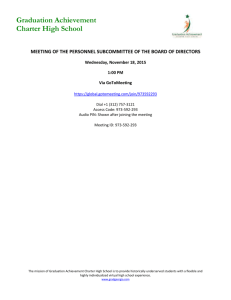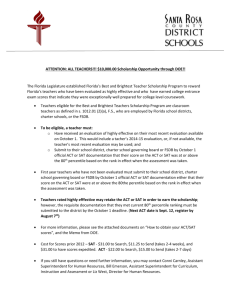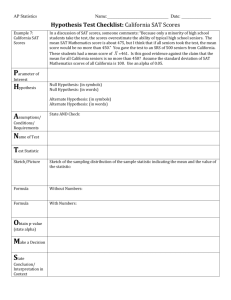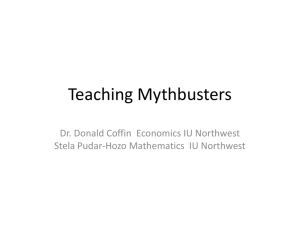2015 Talking Points Word document
advertisement
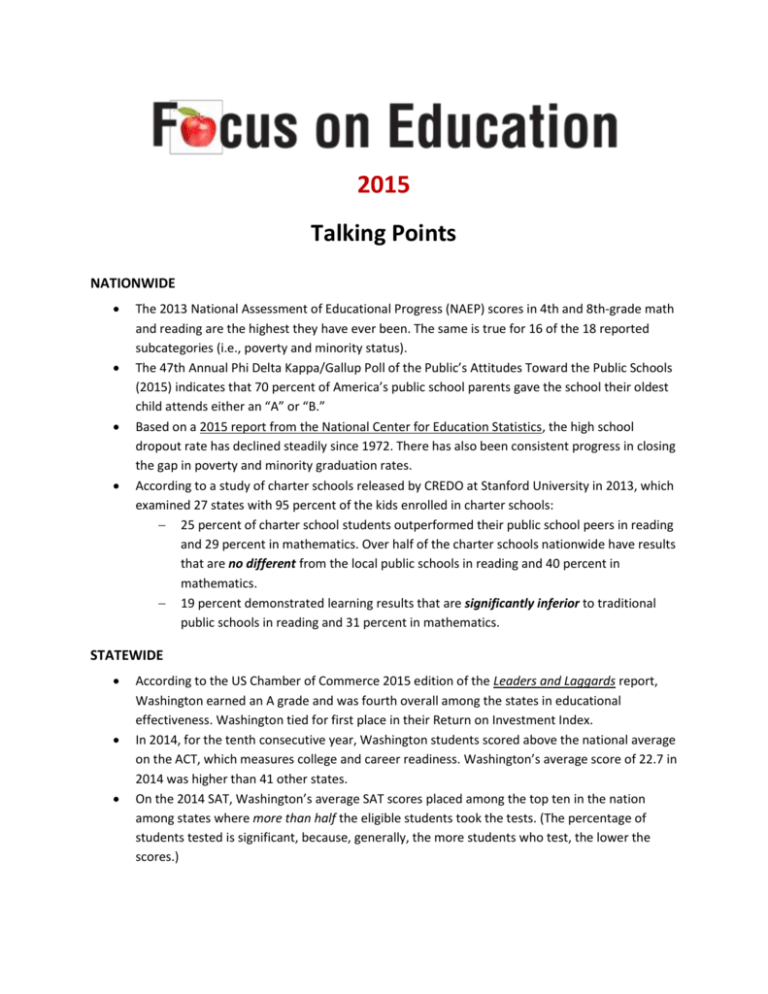
2015 Talking Points NATIONWIDE The 2013 National Assessment of Educational Progress (NAEP) scores in 4th and 8th-grade math and reading are the highest they have ever been. The same is true for 16 of the 18 reported subcategories (i.e., poverty and minority status). The 47th Annual Phi Delta Kappa/Gallup Poll of the Public’s Attitudes Toward the Public Schools (2015) indicates that 70 percent of America’s public school parents gave the school their oldest child attends either an “A” or “B.” Based on a 2015 report from the National Center for Education Statistics, the high school dropout rate has declined steadily since 1972. There has also been consistent progress in closing the gap in poverty and minority graduation rates. According to a study of charter schools released by CREDO at Stanford University in 2013, which examined 27 states with 95 percent of the kids enrolled in charter schools: 25 percent of charter school students outperformed their public school peers in reading and 29 percent in mathematics. Over half of the charter schools nationwide have results that are no different from the local public schools in reading and 40 percent in mathematics. 19 percent demonstrated learning results that are significantly inferior to traditional public schools in reading and 31 percent in mathematics. STATEWIDE According to the US Chamber of Commerce 2015 edition of the Leaders and Laggards report, Washington earned an A grade and was fourth overall among the states in educational effectiveness. Washington tied for first place in their Return on Investment Index. In 2014, for the tenth consecutive year, Washington students scored above the national average on the ACT, which measures college and career readiness. Washington’s average score of 22.7 in 2014 was higher than 41 other states. On the 2014 SAT, Washington’s average SAT scores placed among the top ten in the nation among states where more than half the eligible students took the tests. (The percentage of students tested is significant, because, generally, the more students who test, the lower the scores.) Washington’s 2014 SAT participation rate of 63 percent is the second highest among western states and beats the national average. According to the Office of Superintendent of Public Instruction (OSPI), Washington’s on-time 2014 high school graduation rate was 77.2 percent, compared to 65.7 percent for the class of 2003. That represents an 11.5 percentage-point increase in the on-time graduation rate in just over a decade. Test scores and graduation rates are easy to quantify, but there are many other important factors in each student’s success that don’t lend themselves to easy statistics. A vast majority of Washington’s students leave our public schools as informed citizens, ready to pursue continued learning and productive work. DISTRICTWIDE Innovation abounds in Washington schools today. In ________ School District we provide_____________ (offer some examples of innovations for which you are proud). Our staff are committed to continuous improvement in meeting the needs of students. We seek the partnership of students, parents, and the community at large in this important work. Here are a few examples of how it is working in our district ________. Our student’s performance on the new Smarter Balanced Assessment (SBAC) were about where we expected them to be. The SBAC is a new test, tied to new, more difficult learning standards. In 1997, the first WASL results also had a low percent meeting standard, but those scores improved consistently to a much higher passage rate. Given the consistent efforts across the district, we expect the same to be true with the SBAC. The $1.3 billion per biennium of new education funding statewide has been widely reported. For the 2015–16 school year, this amounted to $_______ in new funding for _________ School District. Of this amount, we have discretion in how a total of $________ is spent. The new revenue is being used for ____________ (broad strokes).

